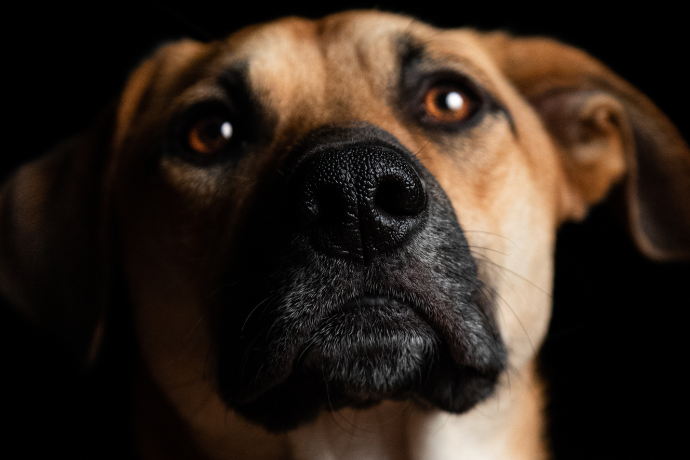All about progressive retinal atrophy

Progressive retinal atrophy is a degenerative ophthalmological condition that affects photoreceptors in the retina and constitutes a significant clinical challenge in veterinary practice.
This hereditary disease affects both dogs and cats, and is more common in large breed dogs.
Anatomically there are two types of photoreceptor neurons: rods, located in the periphery, and cones, located in the center. In this disease there is a progressive loss of these photoreceptors that compromises the retina’s ability to capture light, resulting in the gradual loss of the animal’s visual function, since visual information cannot be transmitted efficiently to the brain. Its initially very subtle onset makes early detection challenging and owners often do not notice the disease until it is in an advanced stage.
This condition, with a hereditary origin, affects both eyes equally, showing a certain predilection for specific breeds, such as the Poodle, Cocker, Labrador, Golden Retriever or the Bichon Maltese, although it can manifest itself in any breed and animal species (see table 1 ).
Table 1. Breeds genetically predisposed to suffer from degenerative retinal atrophy.
| Akita | Doberman | Rottweiler |
| Alaskan malamute | Fox terrier | Schnauzer miniatura |
| Basset hound | Gran danés | San Bernardo |
| Beagle | Greyhound italiano | Samoyedo |
| Border Collie | Golden retriever | Schnauzer gigante |
| Border Terrier | Husky siberiano | Scottish terrier |
| Bóxer | Labrador retriever | Shih tzu |
| Bull Mastiff | Bichón maltés | Spitz |
| Bull terrier | Pastor belga malinois | Spaniel tibetano |
| Chihuahua | Pastor alemán | Setter irlandés |
| Caniche | Perro de agua portugués | Setter inglés |
| Rough collie | Pequinés | Setter gordon |
| Cocker spaniel inglés | Pointer | Springer spaniel inglés |
| Cocker spaniel americano | Pomerania | Terrier tibetano |
| Carlino | Papillón | Teckel |
When does the disease appear?
Progressive retinal atrophy tends to manifest from the age of 8, but degeneration begins its course from 2-3 years of age. The initial symptoms are usually linked to the dysfunction of the rods, which are the first photoreceptors to deteriorate and are responsible for night vision. In dim light conditions, dogs may show difficulty seeing well, showing greater insecurity in their behavior. Owners may notice this phenomenon during night walks.
Animals experience difficulties perceiving objects and have dilated pupils in response to the lack of light perception. In many cases, progressive retinal atrophy is associated with the development of cataracts; These develop due to eye damage caused by substances produced by the degenerated retina.
How is it diagnosed?
The diagnosis of the disease requires validation from the veterinarian. It is recommended to perform annual visual checkups, especially in breeds predisposed to this disease.
The essential diagnostic tests to diagnose progressive retinal atrophy will be ophthalmoscopy to view the fundus of the eye and electrorenitography to assess the response of the retinal photoreceptors.
Which is the treatment?
In terms of treatment, it is crucial to highlight that progressive retinal atrophy lacks curative options, given its degenerative nature. However, there are therapeutic approaches that can slow down its progression, emphasizing the importance of early diagnosis to start treatment as soon as possible. Carrying out periodic checkups on pets, especially in predisposed breeds and in dogs that have suffered cataracts in their youth, is essential, since both pathologies are sometimes interrelated.
Therapeutic options include peripheral vasodilators, vitamins and lutein supplements such as Retinae from Dr+Vet. These supplements seek to provide support that, although it does not reverse the condition, can improve the patient’s quality of life and prolong their visual capacity. In this context, specialized veterinary care plays a fundamental role in the comprehensive management of progressive retinal atrophy, providing owners with guidance and care tailored to the specific needs of each patient.
This text is for informational purposes only. We suggest that you take your pet to the veterinarian in case it shows any discomfort similar to those mentioned in the article.



